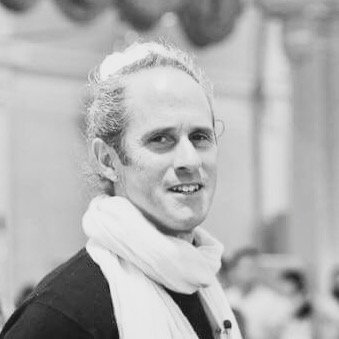Yoga practice is often presented as a salve to bring relief to our many stresses in daily life. The higher purpose of Aṣṭāṅga yoga, however, is for psychological and spiritual transformation. As with any practice of this nature, we should expect to face some obstacles as part of the process. If we don’t understand these difficulties as part of the bigger picture, it may cause us to question the validity of our practice when the results are not in line with our expectations. But the obstacles that are placed in front of us serve a purpose: They are a catalyst for transformation, which can result in our liberation from suffering.
Patañjali’s Yoga Sutras open with three important statements defining the state of yoga. The first is that “yoga is controlling the activities of the mind.” Second, if that is achieved, we will then, “become established in our true nature,” which results in our liberation from suffering. However, if we are unable to control the mind, “we will instead mistakenly identify with the mind’s activities.” The uncontrolled mind is constantly drawn toward the external world, identifying with and seeking fulfillment from transient objects, which cannot bring lasting happiness. Only by controlling the mind and turning it inward will we discover our true nature or identity, which is a source of joy.
The kind of controlled mind mentioned in the first sutra is very rare and considered to be the outcome of many lifetimes of practice. In the second chapter of Yoga Sutras, Patañjali gives us the systematic practice of Aṣṭāṅga yoga as a method for obtaining that yogic state of consciousness. Aṣṭāṅga yoga practice requires sustained effort over a long period of time, but for one who is able to practice diligently and overcome any obstacles that inevitably arise, the result will be a controlled and steady mind that allows one to become established in their true nature.
Patañjali’s Obstacles
In chapter one of the Yoga Sutras, after presenting an outline of the nature of a controlled and balanced mind, Patañjali lists nine obstacles that are able to scatter the controlled mind and prevent its inward movement. The sutra (1:30) says, “Vyādhi styāna saṃśaya pramāda ālasya avirati bhrāntidarśana alabdhabhūmikatva anavasthitatvāni citta vikṣepāḥ te antarāyāḥ.” This translates to “Disease, mental torpor, doubt, inattentiveness, idleness, indulgence, illusory thinking, failure to proceed and unsteadiness are the obstacles causing scattering of the balanced mind and prevent its inward movement.”
These obstacles cause citta vikśepa, or a scattering of the mind, so that we are unable to focus it in a single direction. He also chooses the sanskrit term antarāya for “obstacles” inferring that they prevent the mind from moving inwards, the real goal of yoga. Hence, one can practice yoga for many years, but without overcoming these hurdles, there is no real yoga and the practice remains on the physical level only.
The nine obstacles are presented in an order that may commonly be encountered in practice over the long-term, from the very beginner student to one who is very experienced. The first obstacle is vyādhi, meaning disease and can refer to disease at any level. When we are sick, or unhealthy physically, it is not possible to focus the mind effectively on the path of yoga. To begin progressing in yoga, we must first overcome the most basic obstacle of our health. It is, therefore, essential to first develop a strong, healthy and vital system for the purpose of going deeper. Pattabhi Jois stressed again and again that without it, attaining any kind of meditative state of attention was impossible. I had even heard him advise one student of the need to practice āsana for a long time before being able to even contemplate the practice of yama and niyama. Otherwise, he said, these beginning limbs of Aṣṭāṅga would be too difficult to attempt.
The next obstacle is styāna, which is a mental state of languor or heaviness. Beginner students, in particular, may find it hard to overcome styāna in order to establish a consistent practice. Many days, they may chose to stay in bed and sleep rather than rise early and practice. If we are able to practice even a few times a week, we will start to realize that doing only a few Sūryanamaskāras each time is enough to refresh and infuse the body and mind with renewed energy. The result being that we feel much more mental clarity throughout the day, which, hopefully, inspires a change in attitude toward establishing a longer routine.
The third obstacle, saṃśaya, or doubt, is one that comes further along the path for many practitioners. After practicing for some time and experiencing the initial excitement of a new routine, it is common for some uncertainty to arise. This is a normal, natural tendency for most. However, it must be surmounted, otherwise, it can affect our ability to focus intention and energy in one direction. It can also be very debilitating and pervasive through other areas of life and can manifest in the physical body as a lingering pain or discomfort.
Related: 8 Years in a Yoga Rut Deepened My Practice
Like the other obstacles in yoga, doubt comes from being disconnected from our true Self. There is ambiguity how to move forward in life, being unsure of our personal dharma or how to manifest it. There may be a tendency to drift, start and stop practice, or to switch back and forth between teachers. The difficulties then tend to compound as you receive different advice about how to progress, which is often conflicting and may inhibit you from progressing in any direction. Conversely, one who maintains a consistency in practice with one teacher will tend to make steady progress over time.
One of the solutions that Patañjali provides for conquering these challenges in yoga is particularly apt here. He says, “Tat pratiṣedha arthaṃ ekatattva abhyāsaḥ,” which translates to “in order to prevent those earlier obstacles, repetition of a single principle.” This infers that by staying with a single teacher, practicing a single kind of yoga, and concentrating the mind in only one direction, those kinds of difficulties are less likely to arise and can be more easily overcome if they do.
There are several more obstacles mentioned by Patañjali that commonly present themselves on the path of yoga, and as one continues to practice, they are bound to appear at some stage or another. An insightful teacher has experienced the yoga path themselves and is able to work with a student consistently and over a long period of time will, hopefully, guide the student move beyond them.
Patañjali’s most important solution to overcoming obstacles to yoga is Īśvarapraṇidhāna. This means the depositing of Īśvara (or God) in one’s heart. Patañjali describes Īśvara as a special soul, who is untouched by any karma, contains the seed of all knowledge and who cannot be excelled. A non-sectarian explanation would be that we become aware of a higher power that is the source of all understanding, which we are able to surrender to and feel the presence of within our spiritual heart.
The early efforts that we apply in yoga practice often reveal glimpses of this kind of higher knowledge. We may not fully understand them at first, but they are what impel us to go deeper in practice. It is also the kind of experience that generates faith in our chosen path, liberating sustained focus and energy to proceed. Finally, when we have Īśvarapraṇidhāna, then “the goal is very near” since it is the wisdom that is gained by Īśvarapraṇidhāna, beyond intellectual knowledge, that provides a sharper focus and greater understanding of why we are truly practicing yoga.









Comments (0)